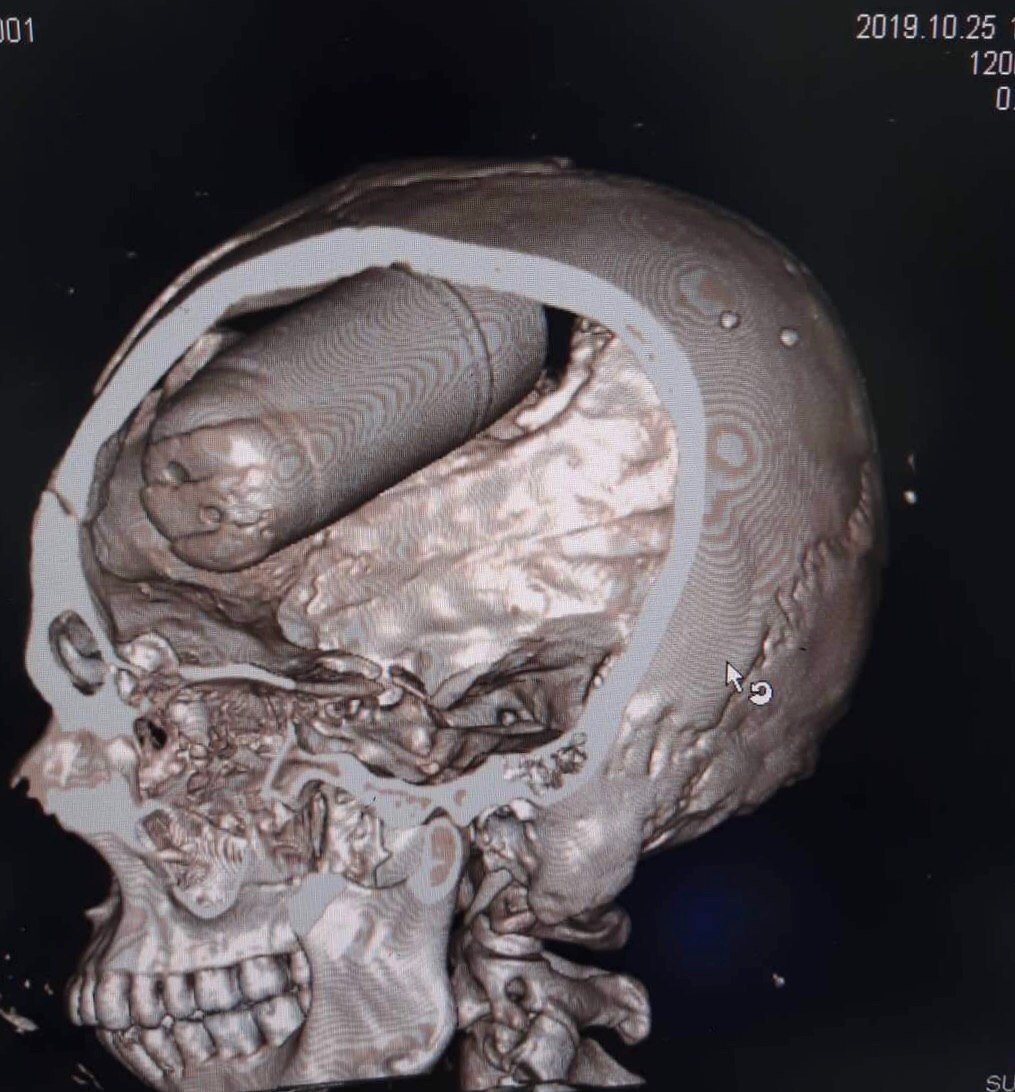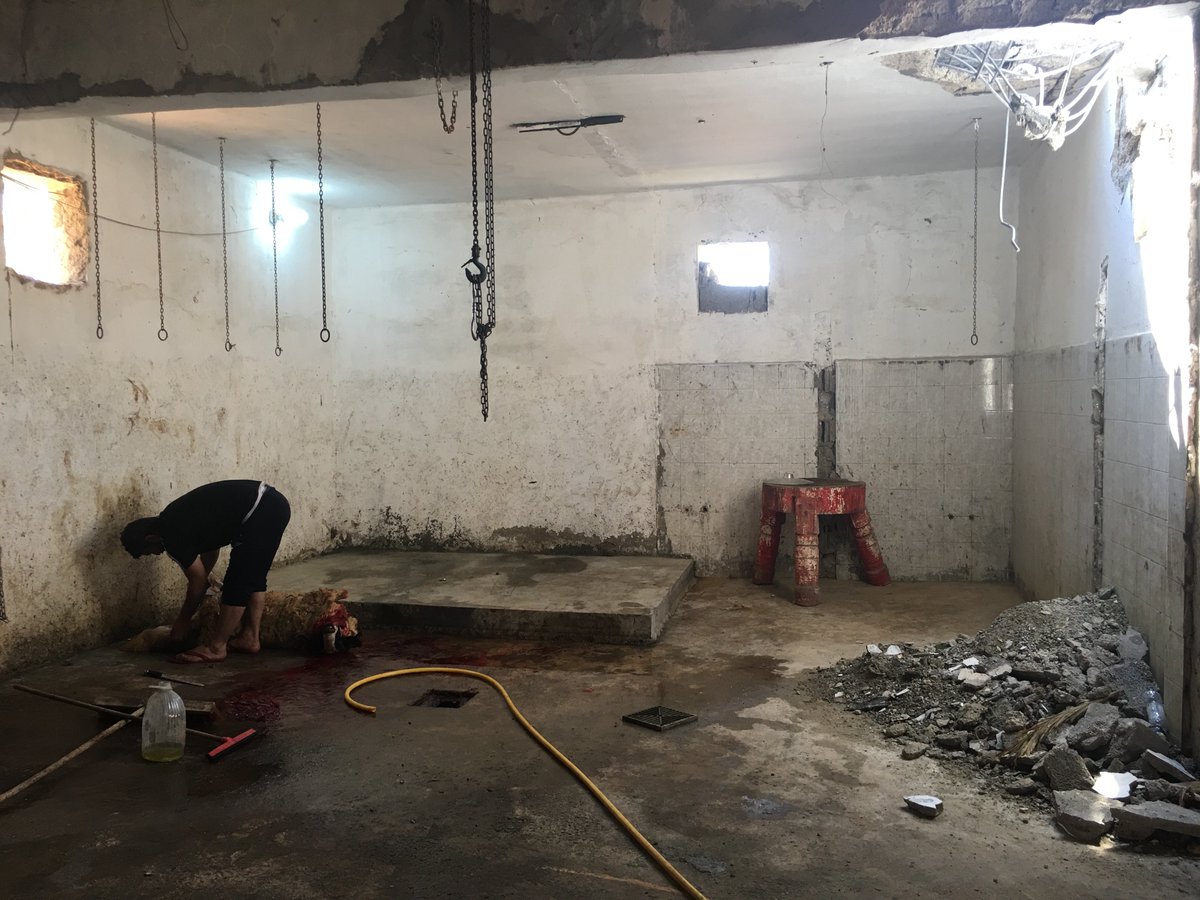
My new book, STAMPEDE, is coming out April 13th. (penguinrandomhouse.com/books/598588/s…)
A true joy of researching the Klondike gold rush was diving into the wealth of historical imagery. So every day between now & pub, I want to share a photo. Like this iconic shot of the Chilkoot Pass: 1/
A true joy of researching the Klondike gold rush was diving into the wealth of historical imagery. So every day between now & pub, I want to share a photo. Like this iconic shot of the Chilkoot Pass: 1/

Prior to the 1897 rush, few prospectors worked the creeks off the Yukon. The indigenous people knew of the gold but had little use for it. The Russians barely left the Alaskan coast. Americans didn't arrive until the 1870s. To me these guys look made of soot and frostbite. 2/ 

Early settlements like Fortymile were poor miserable places. The few miners dug out barely enough gold to cover costs and stay in the country. Sled dogs weren't fed in summer (cuz they weren't working) & so stole and ate anything left unguarded, incl (in 1 story) a lit candle. 3/ 

Who discovered the gold near the Klondike River in August 1896 is a matter of controversy. #NoSpoilers One contender is Robert Henderson, a "born prospector" who toiled alone for yrs. He was the 1st miner to try out the Klondike; everyone else dismissed it as "a moose pasture."4/ 

Another contender is George Washington Carmack, a Californian who was shunned by other white men for being an "Indian lover." But George spoke Tagish poorly & couldn't pronounce the names of his wife (Shaaw Tlaa) or daughter (Aage), so he renamed them Kate and Graphie Grace. 5/ 

News of the strike didn't reach the US until July 15, 1897, when the first group of returning successful miners arrived in San Francisco. The country was in an economic depression, and the country went mad with gold fever overnight. The phenomenon was called "Klondicitus." 6/ 

Within the week, a stampede north had begun, composed of celebrities and commoners, former Civil War generals and senators, streetcar drivers and policemen. Here's the dock in San Francisco on July 28, 1897, the crowd pressing against an overloaded steamer bound for Alaska. 7/ 

Huge demand for steamers forced every rotting hulk in a drydock back into service. So many sank that newspapers stopped covering the story & just printed the names of the dead as filler between ads. Not to mention the Clara Nevada, which the capt sank to steal the gold onboard.8/ 

What to take to mine in the Yukon? Listicles of essential goods appeared in all the papers: everything from flour and sheet-metal stoves (smart) to lawn bowling sets and oxen(less so). Here's the beach at Dyea, Alaska - new stampeders posing in front of their "ton of goods." 9/ 

There were two main ports in Alaska: Skagway & Dyea. From Skagway stampeders attempted the White Pass, from Dyea they took the Chilkoot; both paths end at Lake Bennett, Yukon river headwaters. Dyea has been abandoned, but Skagway became a boomtown & today hosts cruise ships. 10/ 

As you can see in prev photos, the stampede was predominantly male; this scene at the Dawson post office shows the approx demographics. There were many reasons for this, not least of which is that women, who could not yet vote, could not legally stake mining claims either. 11/ 

But certainly not all stampeders were men. Ethel (standing) & Clarence Berry formed a rare husband-wife mining team, and were all the more successful for it. They pulled out $130K in gold in 1897 and invested it in oil fields. In 2013 Berry Petroleum sold for $4.3 billion. 12/ 

And Belinda Mulrooney was the richest woman in Dawson. She owned restaurants and hotels--her opulent Fairview had wallpaper, glass windows, and electric lights. To get those building materials over the White Pass, she formed her own posse and robbed a mule train at gunpoint. 13/ 

Only a few women broke strict Victorian norms and wore pants--rather than long skirts, petticoats, and corsets--to hike the Chilkoot Pass. I love the attitude of this woman posing on the left, to me she looks just like Chloe Sevigney. 14/ 
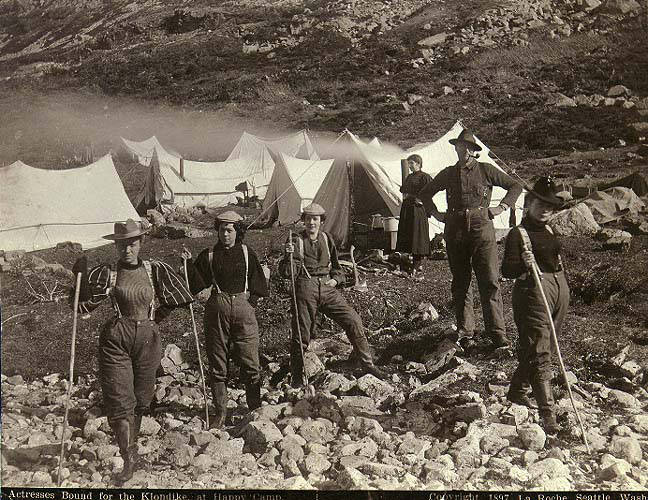
The traditional trading route over the coastal range in SE Alaska, used by indigenous people for thousands of years, is the Chilkoot Trail. But it is narrow, rocky & steep, and tops out at about 3800 feet. Stampeders with $ hired Tlingit packers to carry their outfit. 15/ 

The most famous person (in retrospect) to go over the Chilkoot was Jack London. But back in 1897, he was a 21 year old nobody tramp. In this photo, he is in the small group on the right, the short young man in the cap. London would make it to Dawson, but only mine $5 in gold. 16/ 



The other route over the coastal mountain range was the White Pass, promoted in newspapers as a newly improved trail for horses. It was no such thing. Tens of thousands of the beasts died from falls, starvation, & mistreatment, so many it became known as the Dead Horse Trail. 17/ 

imho, we get our best reportage on the horrors of the Dead Horse Trail from Tappan Adney, the correspondent for @Harpers. Adney was a v. unusual journalist: a boat-builder, naturalist & wildlife illustrator who wrote outdoor adventure stories in a style far ahead of his time. 18/ 
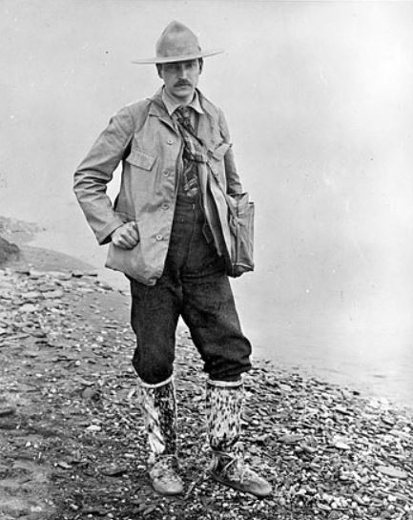
Adney was fascinating. He illustrated Teddy Roosevelt's 1907 book "Good Hunting." His paintings hung at the @ExplorersClub. He shot & stuffed the moose on display at the @AMNH. And @NewYorker writer John McPhee credits him w/ saving the birchbark canoe from history's dustbin. 19/ 
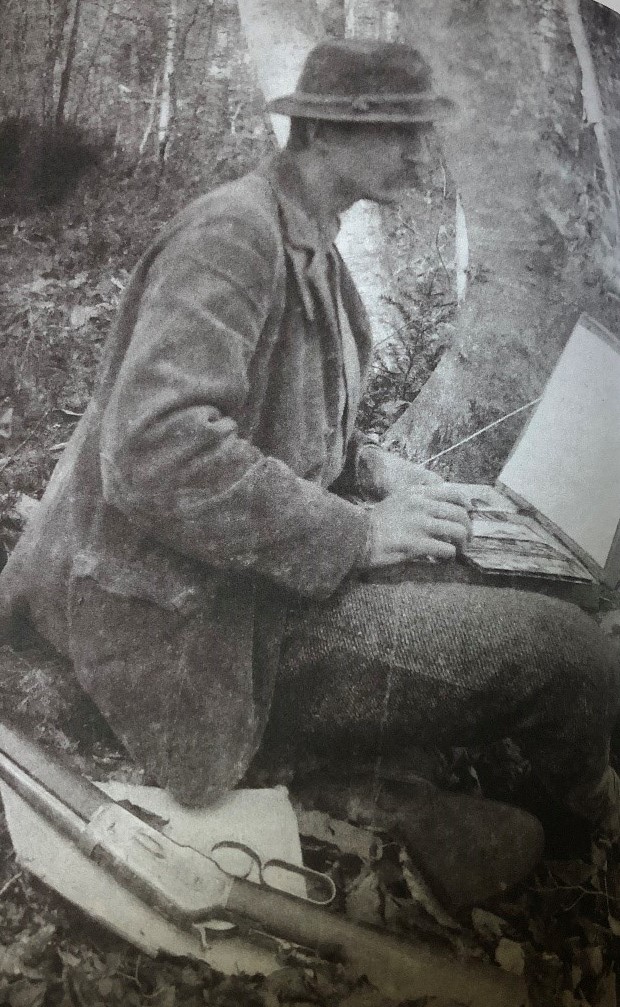
The White Pass was no good for horses, but eventually a railroad was laid along the route, though not in time for the main rush of the stampede. 35K workers would be required to carve a ledge along the face of the canyon. The narrow gauge trains still run--I rode it in 2018. 20/ 

Whether they took the Chilkoot Trail or White Pass, the majority of stampeders arrived in late 1897, as winter came to southeast Alaska. The timing proved deadly, as unprepared cheechakos (the Tlingit word for the newcomers) got stuck in the bottleneck of snowed-in peaks. 21/ 

No single photo does the Chilkoot justice. I did the climb in the summer; a giddy bouldering, seemingly straight up, in the whipping wind. But I had it easy - I only climbed it once. Most stampeders needed 25 trips to get their whole outfit up the final staircase at the pass. 22/ 

But even if stampeders made it over Chilkoot, they had barely started the trip! It was still over 400 miles to Dawson: pack down to Lake Lindeman, build a boat & paddle to Dawson. Some tried the long way, sail the Bering Sea and up the Yukon, but they mostly got caught in ice.23/ 

Little official law or order on the stampede route, only what was called "trail justice." Indigenous people were hanged, and stealing food was punished particularly severely. After whipping this white man, they hung a sign around his neck that read "thief" and banished him. 24/ 
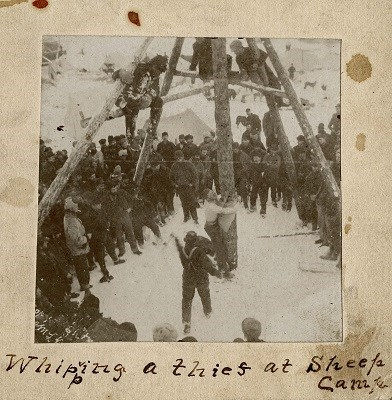
The person most responsible for bringing order to the trail was Colonel Sam Steele of the North West Mounted Police. He was a tough cavalry commander, not the caricature of a friendly Mountie: he posted Maxim machine guns on the border to keep American thieves out of Canada. 25/ 

The main gangster Steele was trying to keep out was Jefferson Randolph "Soapy" Smith, an infamous card cheat, bunco man and murderer who became the shadow king of Skagway. Soapy was a master of fake news, and died in a manner straight out of a McMurtry novel. #RIP #nospoilers 26/ 

After stampeders made it over the Chilkoot, they had to build a boat at Lake Lindeman, in the headwaters of the Yukon River. Most had no idea what they were doing, and built death traps. This photo gallery is from an 1898 issue of @Harpers. Tappan Adney is in the center. 27/ 

There was plenty of whitewater between Lake Lindeman and Dawson City, the headquarters of the gold rush. Cheechakos didn't know how to built boats, and they certainly didn't know how to pilot them in rapids. Hundreds of boats and their crews were lost. #syotr 28/ 

The two worst sections of whitewater were Miles Canyon and the White Horse Rapids. Both were narrow chutes with a bristle of standing waves down the center. This is one of the few photos of the mane of the White Horse - they were buried below a dam in 1958. 29/ 

STAMPEDE comes out in only 2 weeks. (Available for pre-order now, as they say.) That's not enough time to finish the story arc of the gold rush in photos, so I'll skip to the end. Dawson was a boomtown like few others. Bigger than Dallas at the peak. 30/ 

Entrepreneur Belinda Mulrooney built the Fairview, the poshest place in town. Glass windows, wallpaper, oysters. It also contained many firsts: the first third story, first interior electric lights, first telephone (though only connected to her other hotel, the Grand Forks). 31/ 

Eventually bigger hotels and ballrooms would open. Dawson went from starvation to tuxedos and gowns in less than two years. 32/ 

The mines were far less glamorous. The "pay streak" of gold dust followed the path of primordial creek beds, along the bedrock, fifty feet down through muck and permafrost. Picks wouldn't dent it. Dynamite just tightened it. So miners burned their way in, with fire. 33/ 

All winter, the miners would scoop half-frozen muck out of their holes to form a dump, a pile of dirt that could be run through the sluice boxes in the spring, when the creeks unfroze. The gold would stick in the sluice, the useless rock, or "tailings," fall out the tail end. 34/ 

Many of these photos were taken by Eric Hegg, a Swedish photographer who became famous for his work covering the gold rush. After his death, his incredible collection was donated to the University of Washington archives: digitalcollections.lib.washington.edu/digital/collec… 35/ 

About 100K people went on the stampede, the equiv of the populations of Los Angeles & Seattle combined. Only about a third made it to Dawson City. The rest died of starvation, avalanches, shipwrecks, scurvy, and blizzards, or simply gave up and turned around and went home. 36/ 

The stampede proved esp disastrous for the Indigenous people who lived in the region. Policing was capricious & harsh. For ex, the Nantuck brothers were accused of murder. Two died in prison of consumption, two were hung, including the youngest Nantuck, who was a teenager. 37/ 

STAMPEDE is out in less than a week, so let me end by mentioning a few more main characters. Like John J. Healy, a tycoon who owned one of the main outfitting companies in the Yukon, and left Dawson in Sep 1898 with $1.2 million, or 10% of the total gold mined by that time. 38/ 

When George Carmack left the Klondike, he did so with his wife Kate, daughter Graphie Grace, and brother-in-law, Skookum Jim. Kate and co were treated like a spectacle in Seattle, and Carmack disowned her. He told people her English was poor cuz she was Irish (not Tagish). 39/ 

Skookum Jim owned the claim next to Carmack. Unlike most white miners, he largely kept his money, and when he died it went into a trust to benefit his people. Today, the Skookum Jim Friendship Center provides healthcare & legal services in Whitehorse. skookumjim.com/about-us/ 40/ 

I swear George Carmack always looks like death warmed over in all of his photos. Over the years, he and Robert Henderson engaged in a petty feud, over who was the "real" discoverer of the Klondike. Meanwhile, the person who actually found the gold.... #nospoilers 41/ 

Carmack would settle in the high sierra of California, old '49er country. And just down the road from Jack London, who by 1906 had published 5 Klondike novels, including "White Fang" and "Call of the Wild." If anyone embodied the old adage of "mine the miners," it was London. 42/ 

Final thought: Tourists were already visiting the Klondike by 1900. The rush was an Old West myth from the start. My goal in writing the book was to demythologize the story, tell it plain through the eyes of the people there. STAMPEDE is pub'd tomorrow. Thanks for reading. /end 

• • •
Missing some Tweet in this thread? You can try to
force a refresh





